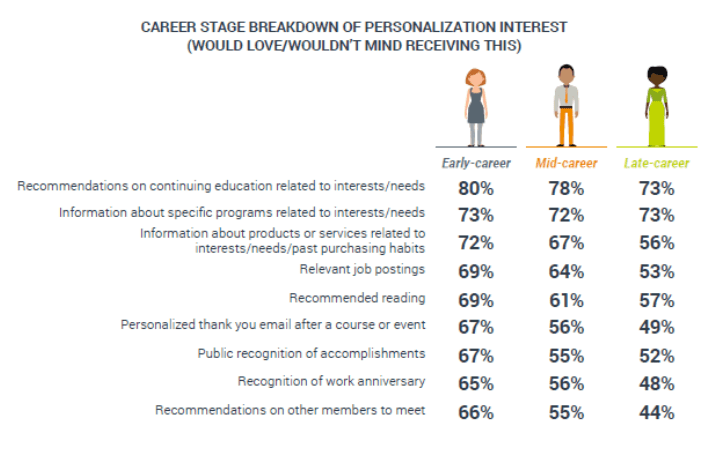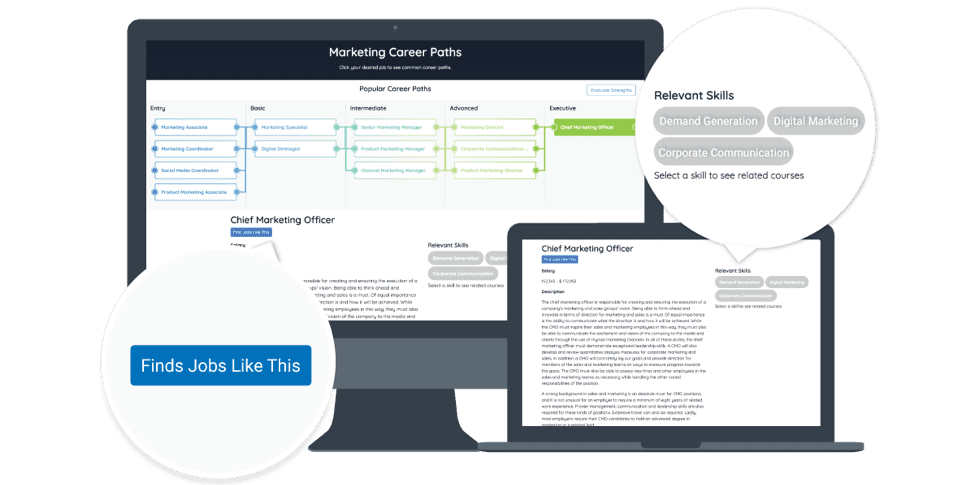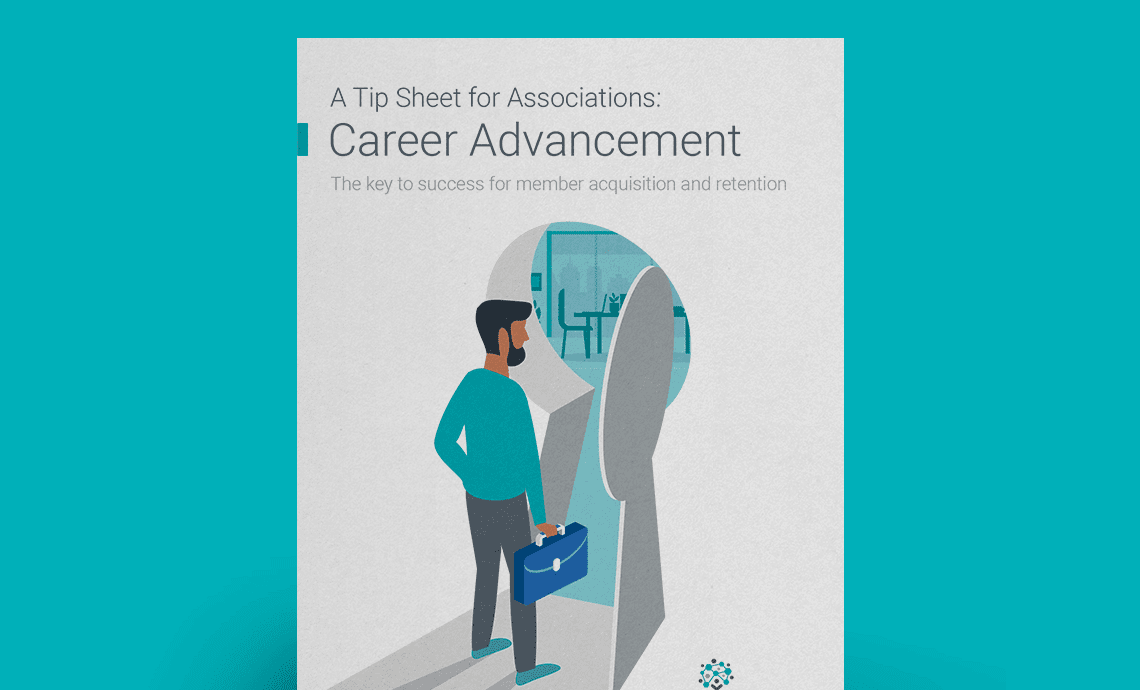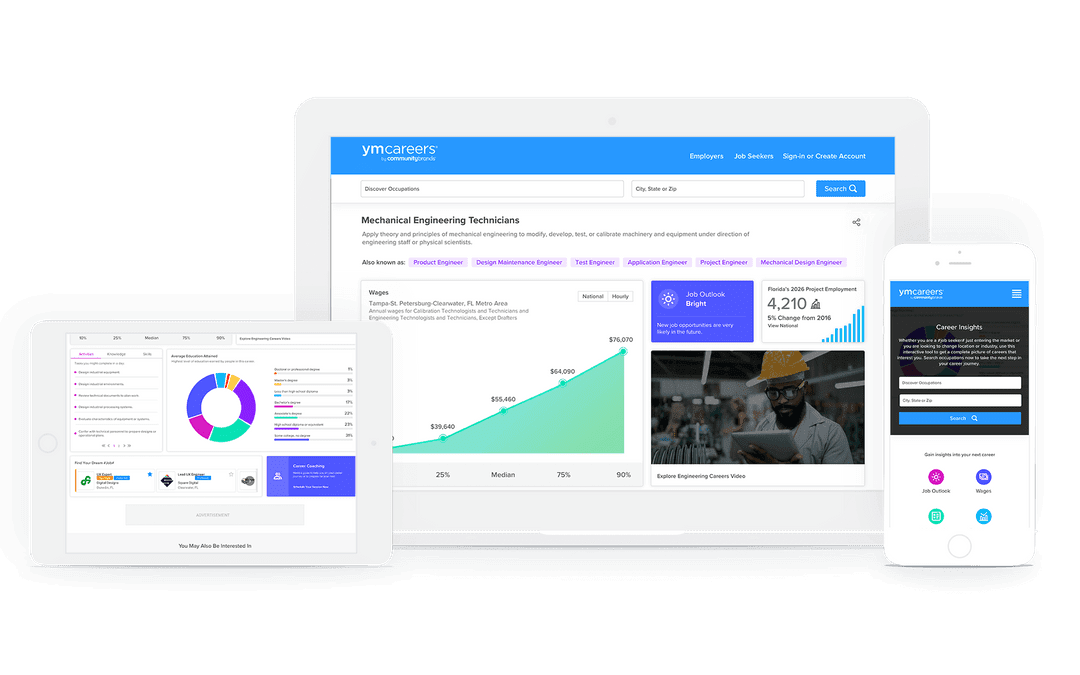Are you considering your members’ needs and expectations through each stage of their careers? Here are six strategies to support the needs of all your members – from students to retirees, and everyone in between.

As you think about your members’ relationships with your association, you likely think about the member journey – from the first interaction with your organization to the moment a member renews. It’s important to look at the member journey throughout their entire relationship with your organization: acquisition, onboarding, engagement, and renewal. Equally important is implementing strategies to support their needs through each phase and season of their career.
Six ways to support members throughout the career journey
1. Reach new members early in their careers. The best time to attract new members is early in their career stage (as a student or between one and five years into their career). As you develop content for attracting prospective members – such as tip sheets, industry news, reports, or information about legislative issues affecting the profession – consider weighing it more heavily toward the early career stage segment.
2. Consider your pricing model. Price can be a barrier to joining, especially for those early in their careers. Consider offering a budget-friendly monthly payment option.
3. Re-think your programs and services. Take a close look at your member offerings and programs to see how they map back to what your members want most in each stage of their careers. Ensure your offerings provide three key professional development benefits in some capacity: learning and continuing education, career growth, and networking. As you onboard new members, be sure to highlight networking opportunities, learning opportunities, career resources, and key content that can help throughout their career journeys.
4. Ask for feedback. Don’t wait until a member fails to renew to find out what went wrong. As you plan various member programs, make changes to your website or do anything that will directly impact your members, get your members involved. Select a few members that may be most interested in the project at hand and ask them for feedback. Be sure to include members at various stages in their careers.
5. Leverage association-specific technology. To support the member career journey, it’s critically important to have association-specific technology solutions in place. Make sure the technology you rely on for membership management, learning management, event management and career services is purpose-built and works well together. This approach will help your team operate efficiently and effectively, while providing the career support your members seek.
6. Remind your members how your organization has helped, can help, and will continue to support their careers. As you near renewal dates, remind your members of the benefits and value they receive from your organization. This is a great time to segment your list and send targeted messages that highlight specific benefits that help them advance their careers.
While members typically join an association to develop and grow their careers, they get value from the organizations to which they belong in different ways along their career journeys. With Career Paths® from YM Careers, show members and early career professionals a clear path to reach their professional goals. Bring together career paths, jobs, required skills, and education that advance members’ careers.
Your members’ needs and expectations evolve as they move through their careers. Having the right technology in place helps you understand and engage with your members through each stage of their journeys.
When thinking about the complete member journey, it’s important to also consider your members’ needs and expectations as they move through their careers. According to Momentive Software research, members feel that career advancement and job opportunities are among the most important benefits of joining an association. A key part of supporting your members’ journeys is making sure you have the right career center technology in place to enhance and increase the value your organization provides its members through each phase of their careers.
What is a career path?
A career path is a clear-cut blueprint for job progression detailing the education and skills required to advance. This roadmap looks slightly different for each individual and each company.
Larger organizations may group jobs by function or department, and advancement may include lateral moves. They typically have well-designed training and development paths for employees to follow. Other companies may have a flatter or more fluid structure, and progression may be less clear.
Members in both groups rely on your association’s technology to help them map out their career paths and access the education they need to do so. Your career center platform also should allow you to support members at various career stages.

Career Paths – Career Planning Portal by YM Careers
What do members look for when developing a career path?
A straightforward career path ensures businesses attract and retain top talent, and members seeking advancement need tools and resources to help them achieve their goals. Some cornerstones members use to develop their career pathways include:
- Partnerships within the industry that connect them to employers and mentors.
- On-demand, accelerated, or credentialed learning opportunities.
- People-skills enhancement programs, such as those emphasizing communication or teamwork.
Comprehensive support
After members explore career options in their given industry and develop their progression path, they may look to your association for assistance. Your career center and technology can provide comprehensive support to your members by:
- Helping them identify current skills: Provide ways to evaluate practical and soft skills and align them to job qualifications and responsibilities.
- Helping them locate employment: Maintain an active job board, sponsor job fairs and networking events, and create multiple opportunities for members to connect with potential employers.
- Helping them develop new skills: Design a mentor program to partner younger members with experienced industry veterans. Offer regular or on-demand education with a robust library of current materials.
- Helping them gain credentials and licenses: Understand the steps and education required for industry-specific certifications and structure a program to help members achieve them. Consider sponsoring study sessions, teaching a crash course, or proctoring licensing exams.

What to look for in career center technology
Your career center should be a source of engagement and help for your members. Look for technology that supports job alerts, personalized searches and recommendations, plus the ability for members to import their resumes from LinkedIn and log in through existing social accounts, such as Facebook, Google, and LinkedIn.
Along with superior job board software and career planning resources for your members, your career center technology should provide revenue-driving enhancements for your association. For example:
- Automatically send jobs to interested, relevant job seekers via email when they’re posted, and allow your members to quickly apply to jobs from their mobile device.
- Increase engagement and job views by recommending opportunities to job seekers, based on their prior searches.
- Offer hiring managers sophisticated options that maximize exposure of their job postings to improve their return on investment.
A key to supporting these aspects of the member journey is making sure you have the right career center and learning management technologies in place to enhance the value your organization provides its members through each phase of their career – from student and early career to retirement. Once you have the right technology in place, it’s time to turn your attention to strategy.
Here are 10 ways to use your career center and Learning Management System (LMS) to support the member journey:
- Generate a report of non-member job seekers from your career center to use in marketing efforts to drive new members.
- Showcase your members’ learning credentials on their career center job seeker profile to help them stand out to recruiters.
- Introduce a job email to your members. Employers are often willing to pay extra for this distribution of their job to additional potential candidates.
- Include a jobs feed or widget in your e-newsletters with recently posted jobs. It’s likely to become one of the most viewed/clicked-upon sections of your newsletter.
- Enable LinkedIn profiles to be imported into your career center.
- Understand how other organizations have adopted different learning formats and how they may be adapted by your organization.
- Add new offerings – such as personalized learning paths, just-in-time learning, virtual conferences, live webinars, and webcasts – to stay relevant with your members and keep them engaged.
- Leverage technology that makes it easier to break down content; offer a variety of learning modes and formats; and deliver content through an organized, customized, on-demand course library.
- Track and award education credits for in-person learning and online learning. Use this data to recommend other relevant courses to members.
- Be a resource. Consider the knowledge and opportunities your association provides. Strategize how to provide value and be the “go to” organization for members and the industry you serve. Create a communication strategy that reinforces this objective.



